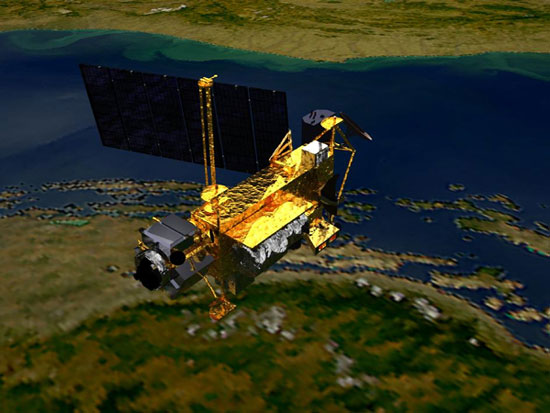NASA reassured about dead satellite fragments
The debris of the US Air and Space Administration's (NASA) Aviation satellite is expected to fall to Earth in September, but most in the ocean or uninhabited region, Reuters quoted US officials as reassuring. .
>>> Space garbage weighs more than 6 tons about to fall to earth
The Atmospheric Research (UARS) satellite weighs about 6 tons, was put into orbit by the space shuttle crew in 1991 and stopped operating in 2005, both burned and broken in space will fall Earth in September but the location has not been determined.

NASA's UARS debris will fall into space in September
In a telephone conference, the deputy head of the space warnings department of the US Strategic Command Michael Ducan said that it could not be determined because the atmosphere changed day by day.
The story of satellite fragments and missiles falling back to earth is nothing new. There were about 400 fragments falling last year. The UARS spacecraft - about 10 meters long, 4.5 meters in diameter - falls once a year. The heaviest mass usually belongs to the structure of the spacecraft, sometimes up to 150kg.
The head of NASA's Orbital Fragment Program - Nicholas Johnson - said most UARS were burnt in the atmosphere, but on average there were 26 individual pieces of a total of 500kg. However, debris often falls into an ocean or an unpopulated area.
Mr. Johnson said: 'According to statistics, fragments rarely fall into residential areas. In the past 54 years, there is no information that shows that fragments from space hurt anyone . ' NASA said the probability of a person hit by a UARS fragment is 1 / 3,200.
- NASA's satellite moment falls to Earth
- Satellite fragments began to fall to the earth
- Vietnam can catch satellite fragments
- What's hot new NASA satellite to communicate with Earth?
- NASA launches the most modern weather satellite to date
- NASA launches a new generation satellite
- Fragments of Chinese satellite fall to the field
- NASA satellite crashed into the Pacific Ocean and went missing
- Satellite Ecuador collided with Soviet missile fragments
- This is how NASA will use it to protect chimpanzees
- American launches satellite monitoring debris around the Earth
- Difficult to confirm satellite data, NASA asked for help from people around the globe
 Van Allen's belt and evidence that the Apollo 11 mission to the Moon was myth
Van Allen's belt and evidence that the Apollo 11 mission to the Moon was myth The levels of civilization in the universe (Kardashev scale)
The levels of civilization in the universe (Kardashev scale) Today Mars, the sun and the Earth are aligned
Today Mars, the sun and the Earth are aligned The Amazon owner announced a secret plan to build a space base for thousands of people
The Amazon owner announced a secret plan to build a space base for thousands of people